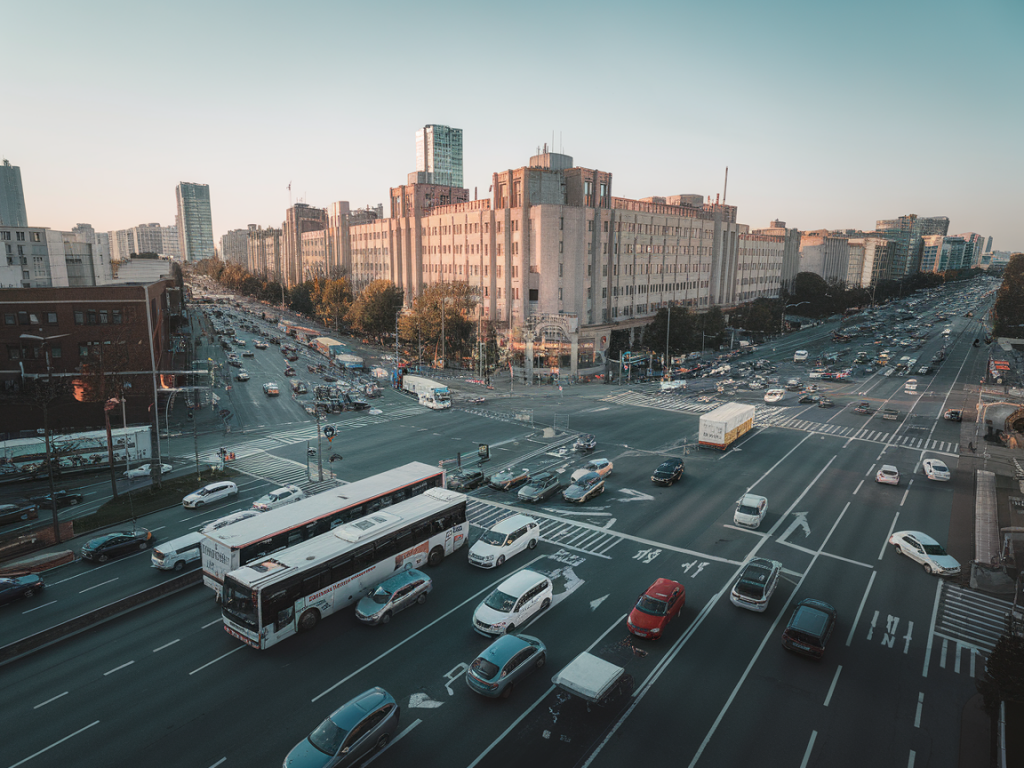
Every morning on my way to work, I watch the traffic map on my phone light up with red lines and bottlenecks—an all-too-familiar snapshot of urban congestion. Despite advances in navigation apps and real-time traffic alerts, we still often find ourselves stuck in jams that seemingly appear out of nowhere. That got me wondering: can artificial intelligence predict traffic jams before they happen? And more importantly, can we use those predictions to prevent them altogether?
As the founder and editor of Mobility News, I find smart city technologies and intelligent mobility systems fascinating. Over the years, I’ve seen how data, automation, and machine learning are reshaping urban movement. But predictive mobility is more than just another tech buzzword—it's an emerging approach that could redefine how we plan, move, and live in our cities.
What is Predictive Mobility?
At its core, predictive mobility uses machine learning, AI, and vast amounts of data to anticipate transportation patterns and disruptions. This includes everything from guessing traffic congestion before it forms to calculating optimal bus timetables based on weather forecasts and social events. These forecasts are not static—they're dynamic, learning continuously from millions of data points including GPS traces, traffic sensors, mobile phone locations, and even social media activity.
Companies like Google, Waze, TomTom, and INRIX have been using real-time traffic data for years to help users navigate more efficiently. But predictive mobility goes a step further: it aims to forecast traffic flow not just minutes but hours—even days—in advance. This could revolutionize the way cities manage transportation infrastructure, public transit schedules, and emergency services.
How AI Forecasts Traffic: The Technology Behind the Magic
AI models rely heavily on historical and real-time traffic data. Deep learning algorithms, specifically Recurrent Neural Networks (RNNs) and Convolutional Neural Networks (CNNs), have shown significant promise in predicting complex spatial-temporal traffic patterns. Here's how it works:
- Data Collection: Cities and navigation platforms collect data through connected vehicles, road sensors, surveillance cameras, and smartphone apps. This includes location, speed, direction, and even driver behavior.
- Pattern Recognition: AI algorithms learn from millions of traffic patterns—how congestion develops, how long it lasts, when and where it usually occurs.
- External Factors: Advanced models incorporate third-party data such as weather, sports events, construction schedules, and even holidays to anticipate spikes in mobility demand.
- Autonomous Feedback Loop: With every prediction, the model updates itself, becoming more accurate over time. It’s a bit like giving your city a digital nervous system.
Real-World Applications Already in Play
Some forward-thinking cities are already testing predictive mobility systems. In Amsterdam, the city’s Smart Mobility programme uses AI to forecast congestion and divert traffic in real time. Similarly, Singapore employs a predictive analytics system through their Land Transport Authority that not only monitors traffic but reroutes buses based on projected ridership hours ahead of time.
Even car manufacturers are entering the predictive arena. BMW and Audi are both working on AI-powered systems that can suggest routes based on predictive traffic models rather than just current traffic and ETA. Meanwhile, Urban Software-as-a-Service (SaaS) companies like Remix and Optibus are enabling public transit agencies to adjust schedules dynamically using predictive data to meet demand efficiently.
Benefits Beyond Traffic
Predictive mobility isn’t just about cutting your commute time—it has the potential to unlock a host of other benefits for smarter, more sustainable urban living:
- Reduced Emissions: Less idling time in traffic means fewer emissions. A study by IBM estimates AI-driven traffic control could reduce emissions by up to 15% in dense cities.
- Improved Emergency Responses: When authorities know where congestion is likely to form, they can pre-position emergency vehicles and optimize response times.
- Dynamic Tolling & Road Pricing: AI can help implement real-time pricing on congested roads to manage demand and reduce peak loads.
- Enhanced Public Transit Experience: By predicting rider demand, transit authorities can reallocate resources, avoiding overcrowded or underused routes.
Challenges and Ethical Questions
While predictive AI offers impressive potential, it's far from flawless. For one, the accuracy of predictions hinges on the quality and completeness of data—and in many regions, especially outside major metro areas, that data is fragmentary at best.
Moreover, predictive models raise privacy and ethical concerns. Who owns the data being used? How do we ensure it's anonymized and not used to surveil citizens? There’s also the question of fairness: could predictive traffic systems divert congestion from affluent neighborhoods only to push it into less affluent ones?
There’s a clear need for transparency and regulation if predictive mobility is to be scaled responsibly. Urban planners, technologists, policymakers, and communities must collaborate to ensure that the benefits of prediction don’t come with unintended social trade-offs.
My Personal Take: The Human Element
As exciting as predictive models are, what continues to fascinate me is how they’re reshaping urban planning itself. When I was studying transportation systems early in my career, traffic modeling was mostly reactive and experiment-driven. Now, we’re entering an era where city systems are becoming anticipatory and adaptive.
But what we mustn’t forget in all this is the human element. AI can predict patterns, but humans create them. Cultural habits, daily routines, political choices—these are still the drivers of mobility trends. Technology can enhance our understanding, but it’s people who make the choices about how we build and use our public space.
As more cities move toward predictive urban infrastructure, we’ll need to engage citizens—not just as data sources, but as partners in shaping mobility policies. Only then can prediction truly serve progress.
If you're curious about how your city is using data to anticipate and solve congestion—or you're part of a community exploring smart mobility tools—I'd love to hear your story. Let’s keep the conversation going and ensure that predictive mobility becomes a tool for empowerment, not exclusion.

